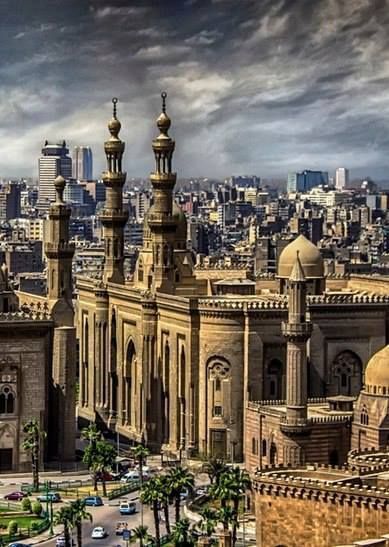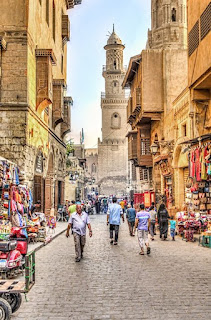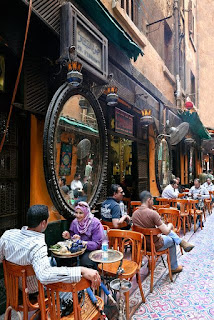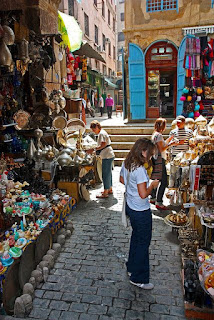Cairo is fan-shaped, narrowest in the south, where the river valley is wedged between desert escarpments, and widest in the north, where the valley blends into the delta. Over the centuries the city expanded westward, as a receding river channel left land flood-free. In response to heightened demand, however, the city also has been elongated to the north and south and has developed an expanding annexe on the Nile’s western shore.
Cairo’s population, once both ethnically and religiously diverse, is now predominantly Muslim. A significant number of Egyptian Christians, the majority of whom observe the Coptic Orthodox faith, continue to dominate certain districts in the city. Remnants of the old Italian, Greek, Syrian, and Sudanese communities are still found in some locations. Differences of status within the Egyptian population depend largely on one’s place of origin (many residents of Cairo were born in rural Egypt), class, and degree of modernity. About half of the city’s population live in the city proper, while half live in the suburbs.
Cairo has long been a cultural capital of the Middle East, as well as the region’s chief mass media centre. For many centuries it was also the site of the region’s major religious and cultural institutions. During the 19th century a number of European cultural institutions, such as theatres, were introduced. The original Baroque Opera House, situated on Opera Square in downtown Cairo, was destroyed by fire in 1971; it was replaced by a modern structure on the southern tip of Jazīrah, completed in 1988.
Egypt has long been known for its musical and dramatic talent and as the site of a renaissance in Arab theatre. The majority of Arabic films are produced by Egyptian companies in Cairo, and leading cinema stars and many popular musical entertainers of the Arab world make Cairo their headquarters. Egyptian radio and television series is broadcast throughout the Arab world, and a number of important newspapers are published in Cairo. Among the oldest and most widely circulated of these is Al-Ahrām, established in 1875, although other dailies headquartered in the city—including Al-Jumhūriyyah, Al-Akhbār, and Al-Masāʾ—enjoy large readerships as well.
Cairene and Egyptian heritage is represented in the collections of the city’s rich series of museums. Located on Al-Taḥrīr Square, the Egyptian Museum displays a vast collection of antiquities, among them the treasures of Tutankhamen; the Coptic Museum in Miṣr al-Qadīmah specializes in pre-Islamic icons, textiles, and stones, and the Museum of Islamic Art in Bāb al-Khalq displays Mamlūk Qurʾāns and objects of wood, brass, inlay, and glass. The War Museum, located at the Citadel, is also in Cairo, and the Turkish-style Manyāl Palace Museum stands on the island of Al-Rawḍah. The mosques of Cairo themselves often offer as rich a historical store as the city’s museums.
The Cairo Zoological Gardens, in Al-Jīzah, contain extensive collections of rare tropical animals in a garden setting. In addition to the sporting facilities on Jazīrah, including racetracks, swimming clubs, and gardens, there is a racetrack at Heliopolis. Naṣr City is the site of the Cairo Stadium and has numerous playing fields. Other recreations and entertainment options include sailboat trips up the Nile, as well as numerous riverfront cafés, restaurant boats, and nightclubs.























































































































No comments:
Post a Comment
excellent go-ahead